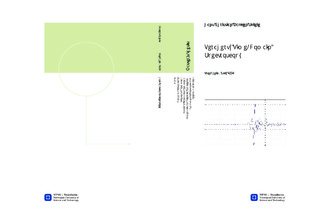| dc.contributor.advisor | Østerberg, Ulf Lennart | nb_NO |
| dc.contributor.author | Skjeie, Hans Christian Bakken | nb_NO |
| dc.date.accessioned | 2014-12-19T13:47:52Z | |
| dc.date.accessioned | 2015-12-22T11:47:14Z | |
| dc.date.available | 2014-12-19T13:47:52Z | |
| dc.date.available | 2015-12-22T11:47:14Z | |
| dc.date.created | 2012-11-08 | nb_NO |
| dc.date.issued | 2012 | nb_NO |
| dc.identifier | 566508 | nb_NO |
| dc.identifier.uri | http://hdl.handle.net/11250/2370576 | |
| dc.description.abstract | The field of terahertz time-domain spectroscopy (THz-TDS) is still far from reaching its full potential, but is a very promising utility for a wide range of applications. Principle experiments have been performed in fields of drug screening, pharmaceutical, medical diagnostics, security imaging and detection of explosives. Optimized and adapted THz-TDS systems holds great promise for driving this technology further.The purpose of this thesis was to build a THz-TDS system, explore possibilities for improving this system and to perform THz-TDS measurements on semiconductors and wood. The aim of the experimental work was to build a stable and reliable system with an electric field strength of THz radiation in the order of kV/cm. The THz-TDS system used in this thesis was based upon the principles of optical rectification and free-space electro-optic sampling in zinc telluride (ZnTe) crystals using a femtosecond Ti:Sapphire amplified laser.Theoretical studies were performed on the principles of generation and detection of THz radiation. The experimental work was based on publications of similar experiments. Theoretical and experimental studies lead to several modifications and improvements of the setup first built in this thesis. Experiments were performed on disparate materials to find suitable materials for THz transmission. Results from measurements performed on semiconductors and wood, obtained by THz-TDS, were analysed to find the absorption coefficient and the refractive index of the materials. The spectroscopic information obtained by THz-TDS can also be used to find the conductivity and the mobility of these materials. THz-TDS measures the electric field and therefore provides information of both the amplitude and the phase of the THz wave. A Fourier transformation was used to obtain the frequency spectrum of the detected signal. The improvements were done by analysing the results of the detected signal to see which adjustments and modifications to the setup that had positive effects on the results. The pump power used for generation of THz radiation and the optimum azimuthal angle of the ZnTe crystals were crucial to obtain a THz-TDS system with a strong electric field. The maximum electric field strength for the THz radiation in this thesis was 13.2 kV/cm, with a signal-to-noise ratio of 43 and dynamic range of 1500. | nb_NO |
| dc.language | eng | nb_NO |
| dc.publisher | Institutt for elektronikk og telekommunikasjon | nb_NO |
| dc.subject | ntnudaim:7404 | no_NO |
| dc.title | Terahertz Time-Domain Spectroscopy | nb_NO |
| dc.type | Master thesis | nb_NO |
| dc.source.pagenumber | 86 | nb_NO |
| dc.contributor.department | Norges teknisk-naturvitenskapelige universitet, Fakultet for informasjonsteknologi, matematikk og elektroteknikk, Institutt for elektronikk og telekommunikasjon | nb_NO |

